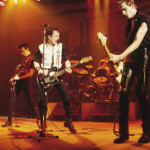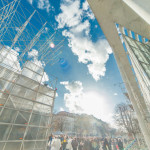Krampus: The Best Reason to be Very, Very Good This Year
Text and Photos: Beth Suda Berr
In this age of über-Christmas commercialism, Germany has somehow kept a sense of mysticism alive in its long nights, warm, cozy Wirtshouses, Christmas markets, and candle-lit Christmas trees. This mysticism is also kept alive in the eerie tradition of Krampus: the devil-faced, horn-headed, whip-bearing “companion” to St. Nick.
This is scary stuff. You might be asking why or how this evil-looking man has a place in Christmas tradition at all. The truth is that Christmas hasn’t always been full of rosy-cheeked Santa, eggnog, and Bing Crosby.
Krampus is a pre-Christian or pagan tradition that began somewhere in the depths of the Alps. Photo: Beth Berr
Krampus is a pre-Christian or pagan tradition that began somewhere in the depths of the Alps. When Christianity reached the Germanic tribes outside of the Alps, they tried to get rid of Krampus. However, Christianity had trouble penetrating the mountains, leaving some villages to continue their older practices and still others simply unwilling to forget all of their old customs. After failing to erase Krampus, they did the next best thing and incorporated him instead - so they paired him up with St. Nick and called it a day.
St. Nick rewards the nice children, and Krampus whips the naughty children and takes them away. Why the tradition of Krampus never made it big in the States is unknown, but it does most likely explain where Santa Claus got his naughty or nice routine.
Some speculate that Krampus has his roots in Greek mythology, which would explain his sometimes satyr-like characteristics - the goat-like horns and the furry body, - but it is hard to say. When the Alpine villagers started dressing up like Krampus, they used what they had available, which just so happened to be goat horns and animal fur.
Because the villages in the Alps were so isolated, there was no consensus on what Krampus should look like. Almost every village has a different version of Krampus using the materials that were most widely available in their region. Some Krampus wear thick animal fur, bones, and hides, and others wear suits of branches and leaves. Some Krampus have devil-like faces while others look like creepy old men that popped out of the woods.
The variety is wide, and the best way to see the many different kinds is to attend the annual Krampuslauf. Are you curious to see these creepy Krampus for yourself? You can find a second Krampuslauf at Marienplatz on Dec. 22nd at 16:00.






 Euro Converter
Euro Converter